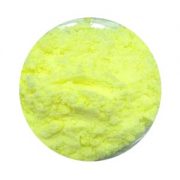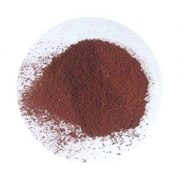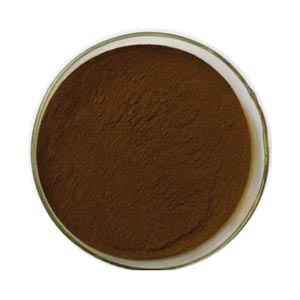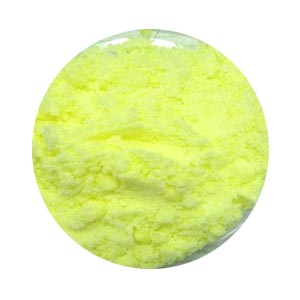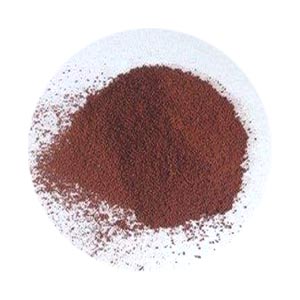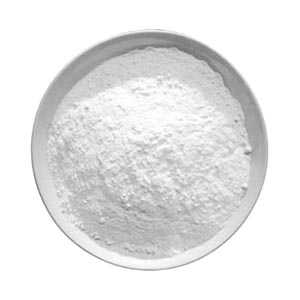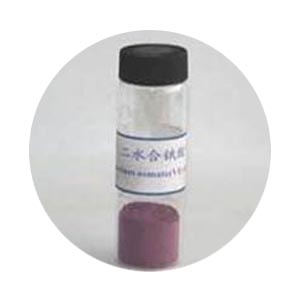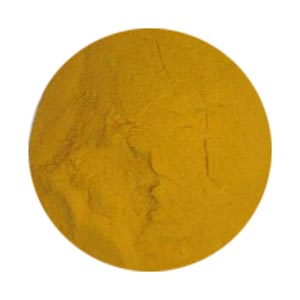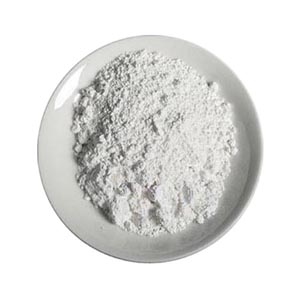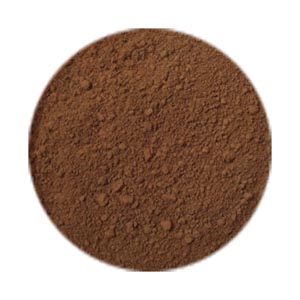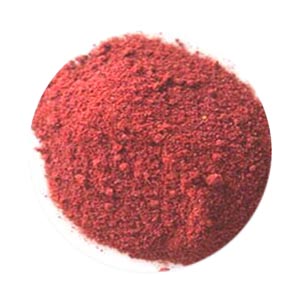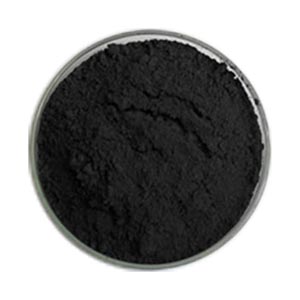
Ruthenium trichloride
Other name :Ruthenium(III) chloride, Ruthenium chloride
CAS No.: 10049-08-8
EINECS number: 233-167-5
Molecular formula: RuCl3
Molecular weight: 171.976
Melting point: 500 ° C
Water soluble: INSOLUBLE
Vapor pressure: 33900mmHg at 25°C
- 描述
- Inquiry
Uses: It can react with many reagents to form various complexes, is the starting material for preparing many ruthenium complexes, or many organic substances. Catalyst for polymerization, isomerization, hydrogenation, etc.
Properties: There are two variants of alpha and beta and water soluble RuCl3. Type α: Black solid, insoluble in water and ethanol. Beta type: brown solid with a relative density of 3.11, decomposed above 500 °C. It was prepared by a 3:1 mixture of chlorine and carbon monoxide at 330 ° C with a sponge. The β-form was converted to α-form by heating to 700 ° C in chlorine gas, and the temperature at which the α-form was converted to β-form was 450 ° C. The water-soluble antimony trichloride RuCl3·xH2O is a brown-red crystal. Dissolved in water, acid, alkali, heated to 200 ° C decomposition in air. Its aqueous solution is red. It is obtained by heating and evaporating a solution of ruthenium tetroxide in hydrochloric acid in a stream of hydrogen chloride. It reacts with many reagents to form a variety of complexes. It is also the starting material for the preparation of many ruthenium complexes. It is also a catalyst for the polymerization, isomerization and hydrogenation of many organic compounds.
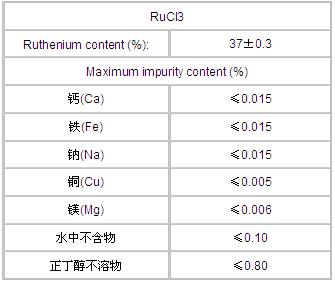
相关产品
-
Platinum(II) chloride
Platinum dichloride, a light brown powder, is commonly used in electroplating, as a catalyst and analytical agent, as well as in epitaxy and diffusion processes in semiconductor production.
-
Palladium(II) tetrammine chloride
Other name: TetraamMinepalladium(II) Chloride
CAS no. : 13933-31-8
Molecular formula: H14Cl2N4OPd
Molecular weight: 263.4634
Melting point: 120℃ (dec.) -
Dipotassium tetrachloroplatinate
Other key words: Potassium tetrachloroplatinate(II), platinum(4+) tetrachloride; platinum(+2) cation tetrachloride, dipotassium tetrachl
CAS no. : 10025-99-7
EINECS no. : 233-050-9
Molecular formula: K2PtCl4
Molecular weight: 415.09
Melting point: 250 ℃
Water soluble: 10 g/L (20 ℃)
Density: 3.38
The vapor pressure, 33900 MMHG at 25 ° C
-
Dinitrodiammineplatinum ammoniacal
Other name:Diammine platinumnitrite,Diammineplatinum(II) nitrite
Platinum content: 60.8%
Appearance:White powder
Sensitivity: Sensitivity to light
Density: 1.015 g/mL at 25ºC -
Potassium osmate(VI) dihydrate
Other name: dipotassium dioxido(dioxo)osmium
CAS no. : 19718-36-6; 10022-66-9
EINECS no. : 243-247-1
Formula: K2O4Os
Molecular weight: 332.4242
Risk terms :R34:Causes burns.
HazardClass : 6.1
Security terms: S17: Keep away from combustible material.
-
Ammonium hexachloroplatinate(IV)
Other name: ammonium chloroplatinate,diammonium hexachloroplatinate
CAS number: 16919-58-7
Metal content: 44.0%
Product appearance: Yellow powder
Product specifications: Analysis pure -
Tetraammineplatinum(II) chloride
Other name: dichloroplatinum tetraammoniate
CAS no. : 13933-32-9
EINECS no. : 237-706-5
Molecular formula: Cl2H14N4OPT
Molecular Weight: 352.12136 -
Palladium hydroxide
Metal content: 75.0%
Appearance: dark brown powderProduct specifications: Analysis pure
Solubility: Insoluble in water, soluble in acid
Product Use: catalyst, synthesis of a variety of palladium compound and catalyst raw materials
Product storage: sealed dry storage at room temperature. -
Dipotassium hexachloropalladate
CAS no. : 16919-73-6
EINECS no. : 240-974-6
Molecular formula: Cl6K2Pd
Molecular weight: 397.3346

